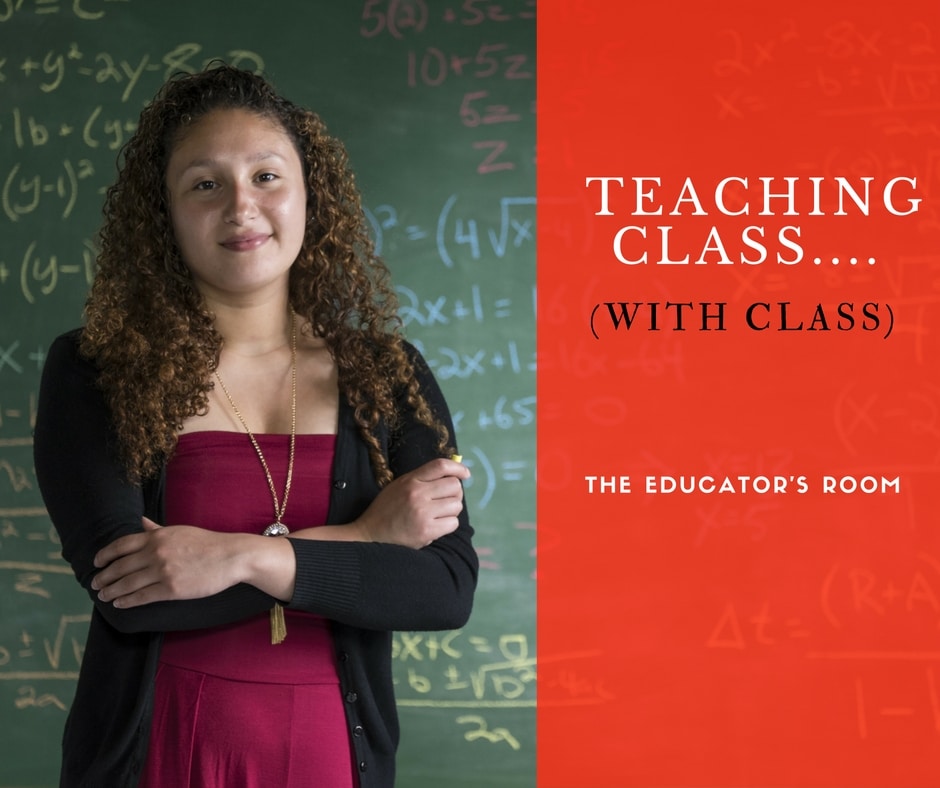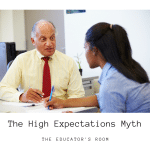In the past, we’ve explored the “10 Ways to Fix Education” mini-series. We’re resurrecting this topic, and one way I’d like to fix education is teaching class (with class).
This homophone highlights two items that should be at the forefront of our working memory and, well, our work. The first association – class, a noun that we associate as a group of individuals whom we’re bestowed the responsibility to teach, is something we’d like to learn about as much as we can.
[fusion_builder_container hundred_percent=”yes” overflow=”visible”][fusion_builder_row][fusion_builder_column type=”1_1″ background_position=”left top” background_color=”” border_size=”” border_color=”” border_style=”solid” spacing=”yes” background_image=”” background_repeat=”no-repeat” padding=”” margin_top=”0px” margin_bottom=”0px” class=”” id=”” animation_type=”” animation_speed=”0.3″ animation_direction=”left” hide_on_mobile=”no” center_content=”no” min_height=”none”][bctt tweet=”One way I’d like to fix education is teaching class (with class).” username=”EducatorsRoom”]
When we first receive our rosters, we want to know the following:
- How many classes are we teaching?
- How many students are in each class?
- What are these students like?
- How about their parents?
- Who needs a bit more TLC?
- Who is going to end up pocketing the classroom set of pencils?
- And so on…
Our class.
See, for non-educators, they need to understand that the class is our most crucial resource. Business professionals have their accounts. Medical care workers have their patients’ overall health. Police officers have their communities. School teachers have their classrooms.
There are roughly 3 million teachers in the United States entrusted with the education of 50.1 million students (as of 2015 NCES statistics). Globally, the World Bank estimates that there are more than 63 million teachers leading 741.77 million students.
What if every one of those teachers didn’t just clock in, sign in, flicker the lights, light the fire, clap the erasers, and the sundry items we’re expected to complete outside the realm of our specialty. What if they did everything with class.
The other definition of this term is an adjective, which speaks and shows a bit of sophistication. Elegance. Integrity. Strength.
Our class.
To breathe life to class and cause it to be a bit more concrete, think of Mahatma Gandhi. Oprah Winfrey. Paul Newman. Angela Bassett. Neil de Grasse Tyson. Mary Poppins. James Bond. Ellen Ripley. Atticus Finch.
Each one of these celebrities and characters exhibits a cool, collected, calm that teachers could choose to channel. When our students ask us who we’re voting for in 2016, something incorrect is stated at a faculty meeting, or a student needs you more than you need their hand in the air for the hundredth time that week, think more “very classy,” less Vito Corleone.
If each one of us taught class with class, we’d be able to turn the anti-teacher rhetoric and policy making on its head. Who would want to cut 3 million Mary Poppins from their schools? I mean, look at how they handle students, bend them to their will, give them meaning, life, and fortitude with such frankness!
Who’d want to turn out a Neil de Grasse Tyson, a true expert in their field? And, if they were so silly, how much of a benefit would the next school be for having him as among its teaching ranks?
How could you put Atticus Finch out on the streets for taking up an unpopular case / student/ moral persuasion? I mean, the guy has a heart of gold, is well-liked, well-intended, and well-spoken?
Ask yourself which you do more of:
- Give or take?
- Compliment or complain?
- Embolden or embitter?
- Call or call out?
- Meet face-to-face or talk behind a back?
- Strengthen a meeting or lengthen one?
- Help or hinder your colleagues?
- Act or react?
- Whine or align?
- Speak or stay meek?
We’re in the process of taking back our profession from all the haters and dictators. Please don’t shirk from the difficult discussions and public battles that are drawn with them. But take the high road.
Our students deserve it.
Our class.
Tune in next week for my follow-up essay: “Teaching Outside of Class by Kicking… Butt.”
 [/fusion_builder_column][/fusion_builder_row][/fusion_builder_container]
[/fusion_builder_column][/fusion_builder_row][/fusion_builder_container]





